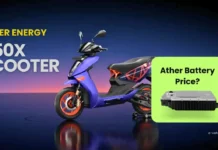MG Comet EV
MG Motor, a subsidiary automobile company of SAIC Motor, China launched its compact EV car named MG Comet EV in the first week of this month (May) and its booking started on the 15Th of May. This car is manufactured in its Halol plant, in Gujarat. This car is a 4-seater with a total length of the car is 2.97 m and a turning circle radius of 4.2 m. So, this car is easy to drive in the city. Its starting price is Rs.7.98 Lacs and comes in three variants-Pace, Play, and Plush with five colors.
MG Comet has a curb weight of 815 kg and with a full charge gives a range of 230 km. MG in its Comet segment has competition with Tata Tiago EV that starts at Rs 8.69 lacs and it has also three variants promising a range of 250 km for its base variant XE.
MG Comet Motor Type
A single Permanent magnet synchronous motor (PMSM) of power 41.43 hp that can generate maximum torque of 110 Nm is used in MG Comet EV for propulsion. The motor is installed in the rear axle. PMSM motor has a permanent magnet on the rotor and winding on the stator. PMSM resembles the construction properties of both Induction and BLDC motors. The permanent magnet on the rotor and the windings on the stators are similar in construction to the BLDC motor. The stator shape with winding construction is providing a sinusoidal flux density which is similar to an induction motor.
PMSM is used over BLDC and Induction motors because it is more efficient, smaller in size as compared to other types of motors, provides full torque at low speeds, requires less maintenance as no brushes are involved for commutation, and has mature technology for its mass production. So, these reasons attracted MG Motor to use PMSM in its Comet model. The company is providing 3 years or 1Lakh km of warranty on its powertrain (motor). Even in Tata Tiago EV, PMSM is used that having 45 kW of power.
Battery Capacity and Type of Battery Chemistry
LFP (lithium-iron-phosphate) based Li-ion battery of capacity 17.3 kWh is used in MG Comet to power the propulsion system of this car. It can be charged fully in 7 hours with a 3.2 kW charger (AC Type 2) that can provide a range of 230 km. LFP-based Li-ion battery provides higher cycle, low self-discharge, and good safety standards as compared to other chemistry-based Li-ion battery like NMC, LCO. The battery pack used in MG Comet has a prismatic form factor (out of the most commonly used cylindrical, pouch, and prismatic). Prismatic cell reduces the size of the battery pack making electric cars compact in size but faces thermal issues as compared to cylindrical cell.
Prismatic Cell
Cylindrical Cell
MG Motor has provided 8 years or 1.2 Lakh km of warranty on its Comet’s battery pack. This battery pack has an IP67 rating protecting the battery pack from water and dust. As per sources, MG Comet battery is supplied by Tata AutoComp which has a tie-up with Chinese battery supplier Gotion. Tata Tiago EV battery pack comes in 19.2 kW and 24 kW of capacity.
MG Comet EV vs Tata Tiago EV
A brief comparison of MG Comet with Tata Tiago EV which is supposed to be the main rival for battery and motor:
| Specification | MG Comet | Tiago EV (XE / XT) |
|---|
| Battery & Capacity | LFP Li-ion battery 17.3 kWh | LFP Li-ion battery 19.2 kWh / 24 kWh |
| Support to DC (fast) charging | No | Yes (58 minutes) |
| Battery Protection | IP67 | IP67 |
| Warranty (on battery) | 8 years or 1.2 lakh km | 8 years or 1.6 lakh km |
| Electric Motor | Permanent Magnet Synchronous Motor (PMSM) | Permanent Magnet Synchronous Motor (PMSM) |
| Maximum Torque (Nm) | 110 | 110 / 114 |
| Range (km) | 230 | 250 / 315 |




